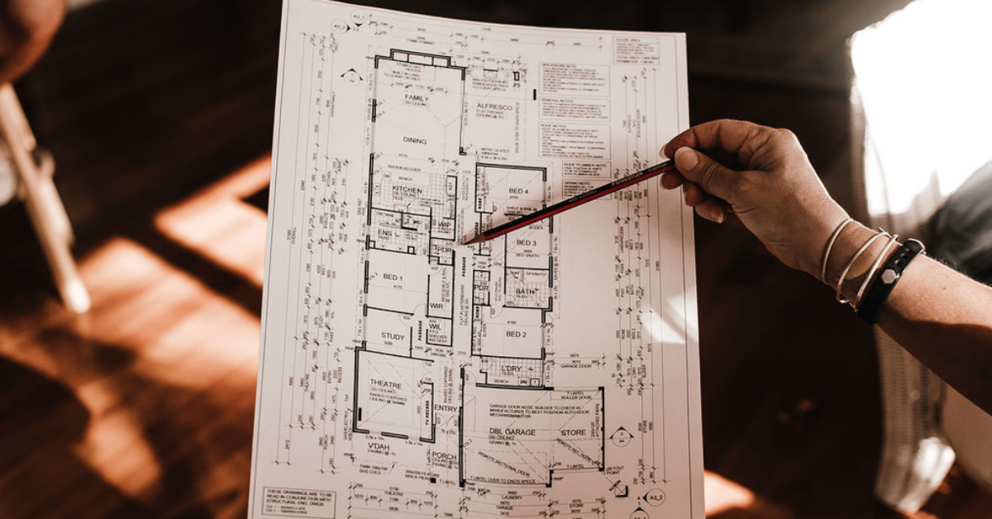
LANDCONNECT — 11 February 2021
How To Choose The Perfect Floorplan
Everything you need to know about selecting the perfect floorplan
Building your dream home is one of life’s most exciting and intimidating prospects. While you might have a few ideas, can you truly say what your dream home looks like? And is it something that you can build in the real world, at a price you can afford?
Floorplan design is where your house dreams begin to be realised.
You’ll be tasked with finding a balance between form and function, between features and affordability. You’ll need to think about how you’ll be using your house both now and into the future while taking into account the limitations of block size, budget and council rules.
To minimise the anxiety and maximise the excitement, let’s take a look at the six key considerations that you should make when choosing the floorplan for your new home.

Understand the rules
It can be easy to get carried away with designing a dream home, so the best place to start is with the constraints. By laying out the ground rules from the get-go, you’ll ensure you work within them.
First things first: what is your budget? Consult with a lender to find out how much you can afford to borrow, and remember to take into account the price of the land.
Secondly, what are the rules of the local council, the estate and/or the neighbourhood? Are multiple stories permitted? Do you need a certain amount of space between your home and your fence? Are there any restrictions on pools? By answering these questions, you’ll avoid wasting time on the impossible.
We always recommend talking with a builder early on in the process to understand these items in detail.
Consider your block
The size, shape and slope of your block can have a dramatic affect on the sort of home that can be built on it.
If there is a considerable amount of fall (slope) across the lot you may need to seek out a builder who has split level designs on offer.
In addition, if you are considering a corner lot, you may be restricted on the type of house due to setbacks (distance from the boundary to where your floorplan can sit) which are specific to corner lots.
Last, there will be lot-specific features such as building envelopes and easements; these all require consideration.
Once you’ve got your eye on a lot and a floorplan, you can pop into the major builders and ask them to complete a preliminary siting.
This document will demonstrate if and how the floorplan sits on the lot of land and will guide you on whether you need to reconsider or you are able to proceed with your chosen combination.

Find the right size
How big would you like your home to be? How big will your block allow it to be? You’ll need to find the balance between these two questions if you are to choose the perfect floorplan for your house.
Remember that bigger isn’t necessarily better. The bigger you build, the more house there is to clean and maintain. This is the exact reason why downsizing is becoming so popular amongst empty-nesters.
On the flipside, if you only have a limited amount of space to work with, consider building up rather than out. A multi-storey home can ensure you have enough space both inside and out, perfect for those who want individual bedrooms and a backyard for the kids.
Combine communal with private
It’s time to consider the sort of lifestyle you’d like to lead in your new home. Do you like to entertain? Be sure to allow room for guests. Do you like to cook outdoors? Treat yourself to a beautiful alfresco area. Similarly, ensure you have the space to exercise, get arty and crafty, work from home, store your tools and play with the kids.
There’s no golden rule for the ratio of communal and private space; it’ll be up to you to find the right balance. It’s also important to consider privacy from your neighbours, something that your floorplan, orientation, windows and garden will have a significant impact on.
Avoid traffic jams
Narrow thoroughfares with tight turns can prove instantly annoying, especially for big families. Wide doorways and open rooms will minimise traffic jams and collisions, while also bringing a sense of space and airiness to your home.

Have an eye on the future
You can’t just think about the here and now when choosing your floorplan. If this is to be your forever home, you’ll have to consider what forever looks like.
If you choose a floorplan with enough space, considering what lies ahead is crucial in the long run.
Are you thinking of becoming parents or having more kids? Doing so will mean more than just adding a bedroom – you may need an additional study and a playroom too. Alternatively, are your children on the verge of moving out? Or will your parents want to move in their old age? Many of these questions will not have clear answers, but for each of them, it’s better to overestimate than underestimate the room you might need, and be forced to build expensive extensions later.
Sure, the thought of choosing the perfect floorplan can be intimidating.
But if you take the time to consider the points listed above, and understand what you want and need in a home, you’ll be far more likely to both enjoy the process and come out the other end of it smiling.


